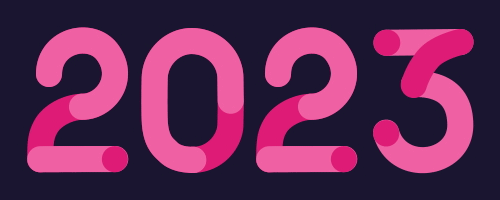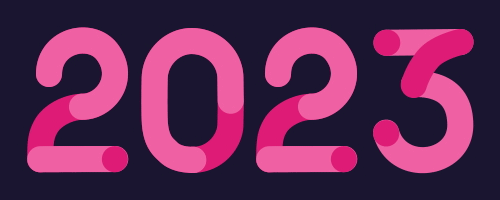Discover the 5 trends that’ll dominate
 Has social media, and the internet as a whole, reached a tipping point?
Has social media, and the internet as a whole, reached a tipping point?
If you were lucky enough to access the first ever website on August 6th, 1991, then you – for one brief moment – had officially seen everything on the internet. It wasn’t much to look at. The same can be said for the first YouTube video, the first livestream, or the first Tweet. Nevertheless, there was a sense of intrigue and wonder back then. The internet was a Wild West; an unregulated landscape teeming with limitless opportunity.
While more people spent more time online during Covid, the daily average is now almost on par with pre-pandemic figures. It’s a potential sign that we’ve reached a kind of internet saturation point, but to get a better sense of this in action, you need to look at the situation worldwide. Even in internet growth markets, time spent isn’t increasing as it used to. In the Middle East & Africa, and Latin America, average daily time spent online has fallen by 20 minutes and 34 minutes respectivelysince 2021 – and this remains the case among younger audiences too. Read more here

We’re entering a new phase of ecommerce, driven by changes in the way we search for products.
In 2014, Susan Philips was among the first to put forward a revolutionary new idea: in the near future, we won’t search for products; companies will find us through social media. This was probably hard to imagine back then, at a time when most people started their shopping experience on Google or Amazon. If you wanted to land more online sales, you’d focus on using good keywords in your product descriptions.
The aim of the game has always been to get in front of customers where they’re searching, but today, we’re playing on a different pitch. In fact, Susan’s prediction is starting to look a lot like reality. According to recent data shared by Google, nearly half of young people look to TikTok or Instagram instead of Google Maps or Search for answers. This has big implications for many online retailers, who now need to rethink their approach to succeeding online. Read more here.
Online identities are set to develop in the metaverse. Customizable self-expression is a must.
The vision of the metaverse is to create a virtual world that’s welcoming to people of all backgrounds. One that connects people and opportunities across borders, and creates new forms of entertainment. No “true” metaverse exists yet, but consumers and brands are exploring and experimenting in online gaming spaces like Roblox, Fortnite, and The Sandbox. Together, they’re helping us understand what the metaverse could eventually be, and its huge disruptive potential.
But to create a truly open world means creating an environment for self-expression, and early metaverse adopters play a key role in defining the shape of this landscape. So, what exactly should brands know in 2023? Read more here.

Despite the rising cost of living, many consumers will still be making room for “must-have” treats. What looks set to make the cut?
Back in the 2008 recession, luxury lingerie sales soared. During the Great Depression and the 2001 recession, people were buying lipsticks in droves. You’d expect consumers to cut down on these “luxuries” during a downturn – so what’s going on here?Well, consumers’ behaviors and attitudes aren’t that straightforward. Sometimes they do the opposite of what you’d rationally expect. But even though every crisis brings its own unique challenges, there are lessons we can learn from past downturns to understand how consumers might behave in the future.
There’s lots of talk about potential recessions in several major global economies heading our way again. While nothing is clear-cut yet, if it does come to pass, it’ll likely be very different to past slowdowns. No other recession has ever followed a time of such severe restrictions before, so pent-up demand is high. We’d be lying if we said we had concrete answers. Nobody does. But what we can do is use our global data to try to piece together the puzzle, and offer up some predictions of where consumers’ discretionary spending might be headed in 2023. Read more here.

Buy now, save the planet later
Consumers are overwhelmed by the world, and sustainability is at stake. The issue runs much deeper than the cost of living. Ask an individual if they care about the environment, and the chances are they’ll confirm. Given the weight of scientific evidence in favor of climate change, the evident loss of biodiversity, natural disasters, and public outrage, it would be very controversial to say otherwise. Ask millions of individuals on an ongoing basis if they care about the environment, and you can start to read between the lines and see the bigger patterns. As is often the case with our data, the truth isn’t just found in what our respondents tell us – it’s also in how those responses change over time or between groups.
In the vast majority of countries GWI track, fewer people now tell us helping the environment is important to them compared to pre-pandemic. In every country we track, the number of people who say they expect brands to be eco-friendly has also shrunk in the last few years. A quick Google search can dig up countless recent studies or news headlines which might contradict that. But the data you’re looking at tells the same story in many completely different countries, at different points in time, and the gradual trend lines are unmistakable.
This is one of many declining sustainability-related trend lines all pointing in the same direction; including interest in environmental issues, self-reported recycling, willingness to spend more on eco-friendly products, and environmental optimism. All have diminished in at least 20 or more countries. Read more here.



 Has social media, and the internet as a whole, reached a tipping point?
Has social media, and the internet as a whole, reached a tipping point?